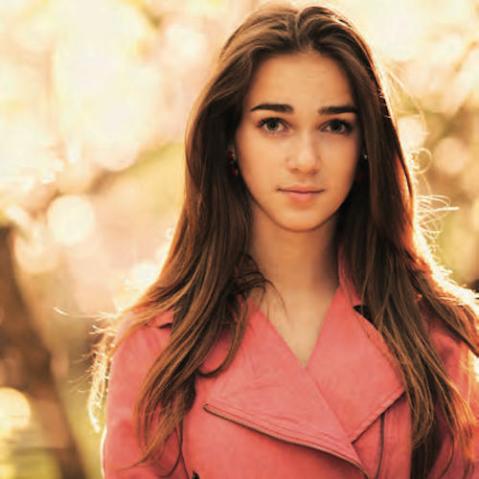Shooting modes – what they are and why you might (or might not) want to use them
A ‘shooting mode’ generally refers to the method your camera uses to select its exposure. Most advanced cameras have four principal shooting modes (known colloquially as the ‘PASM’ modes), a fully automatic mode (marked with a green box, or ‘auto’), and perhaps a small selection of scene modes (although these won’t be present in the highest spec professional bodies).

Preset scene modes
Most compact, bridge, mirrorless, and entry-level DSLRs have a number of ‘preset’ modes. These are semi-automatic modes designed to help you with your photography. In effect, you are telling the camera what kind of photos you are about to take, for example sports photos, portraits, or photos at night, and the camera helps you by using pre-programmed settings, customised for that particular type of photo.
‘Snow’ and ‘Beach’ modes are often found cameras. When you use either of these modes you are in effect warning the camera not to take an overall light reading from the scene as a whole as this is likely to contain large areas of very bright sand or snow, which can trick the camera into underexposing the subject. However, the camera can only use a predetermined adjustment to allow for this, which may not match the actual scene. Learn to use PASM and you’ll be sure to get the exposure you want every time.
Although scene modes can help the novice photographer capture images in certain situations, they don’t do anything you can’t do with a little bit of understanding of photography and the PASM modes. In fact, the better that you understand the PASM modes and what they can do, the more you’ll be able to get out of your camera and the better photos you’ll be able to create.
Auto mode
In Auto mode, the photographer has a very limited amount of influence over what the camera is doing. The camera selects the aperture, shutter speed, ISO, focusing mode, and just about everything else. This mode turns your camera into a ‘point and shoot’ camera not that different from a simple compact camera—point at what you want to take a photo of, press the button, and the camera does the rest.

There’s nothing inherently wrong with using the Auto mode, but if you stick to Auto mode you miss out on the opportunity to make the most from the scene that you’re photographing and really say something through your images.
In Auto mode the camera will do its best to choose the exposure—and ISO and focusing mode—that it thinks will provide the best results based on a database of thousand of images which it compares against the one you’re shooting. However, all scenes are unique in one way or another and, as the photographer, only you know what you want the final image to look like—whether you want to deliberately overexpose, blur, or emphasise one element over another. If you really want to take control of your photos, you need to take control of your camera.
P – Program mode
Program mode is one step up from Auto mode, and many enthusiast photographers use it on a regular basis. In this mode, the photographer selects everything except the aperture and shutter speed, which the camera calculates for you. If the camera comes up with a combination of the two you don’t like, you can usually use a wheel on your camera to change the settings for equivalent exposure: turn one way and you’ll see the aperture get smaller and the shutter speed get faster—and vice-versa if you turn it the other way. You can also use exposure compensation to fine tune the image.

S or Tv – Shutter Priority mode
Shutter Priority is a mode where you dial in a shutter speed (say, 1/200 second), and the camera will automatically select an appropriate aperture setting that provides an ‘accurate’ exposure based on the available light. One situation where you might use Shutter Priority is if you’re shooting sports and you need a minimum shutter speed to freeze the action, or where you want to use a deliberately slow shutter speed for creative effect.

A or Av – Aperture Priority
Aperture Priority is the opposite of Shutter Priority: you select the aperture, and the camera calculates the shutter speed. Photographers for whom controlling depth of field is more important than freezing action are more likely to use aperture priority.
When shooting in Aperture Priority, keep an eye on your shutter speed—if it is very fast without you needing it to be, you may be able to use a slower ISO, which gives images with less noise, or a narrower aperture to extend depth of field. Conversely, if it’s very slow, your photos might come out blurry, so you may want to ramp up the ISO or use a larger aperture setting.
M – Manual
Manual mode is for the true control-freaks among us. In Manual, you select both the shutter speed and aperture. Your camera will still help you, by using its light meter to indicate whether it thinks you are choosing an exposure that is too dark, too bright, or ‘correct,’ but you’re free to ignore the recommendation and take your photographs using whatever settings. This gives you total creative control over the camera.
Take control!
If you’re new to photography, you might not want to dive straight into manual mode, but by slowing taking more control of your camera, you’ll find yourself creating the images that you want, rather than your camera.
Start with P mode and move into S/Tv or A/Av modes, before launching into total control. And even if you usually shoot fully manual, you might still find yourself in situations when Aperture or Shutter Priority makes life easier for you!
In The Ilex Introduction to Photography, Haje Jan Kamps guides you through the process of turning your everyday snapshots into great pictures that you can be proud of. It doesn’t matter if you shoot with a smartphone or a top-of-the-range dSLR, this book has everything in it that you need to know!
[one_whole boxed=”true”]
 The Ilex Introduction to Photography, by Haje Jan Kamps
The Ilex Introduction to Photography, by Haje Jan Kamps
£5.99 Download the PDF now!
This PDF version retains the styling of the original print book.
RRP for print edition: £14.99
[button color=”Accent-Color” size=”small” url=”https://www.ilexinstant.com/product/the-ilex-introduction-to-photography/” text=”Digital Edition”] [button color=”Accent-Color” size=”small” url=”http://www.amazon.co.uk/dp/1781579865?tag=ilexpresscom-21&camp=1406&creative=6394&linkCode=as1&creativeASIN=1781579865&adid=0QKBET521Q8C31RD62Z9&&ref-refURL=http%3A%2F%2Fwww.ilexinstant.com%2Fproduct%2Fthe-ilex-introduction-to-photography%2F” text=”Amazon UK (Print)”]
[button color=”Accent-Color” size=”small” url=”http://www.amazon.com/The-Ilex-Introduction-Photography-whatever/dp/1781579865/ref=as_li_qf_sp_asin_til?tag=ilexinst-20&linkCode=w00&creativeASIN=1781579865″ text=”Amazon USA (Print)”]
[/one_whole]




